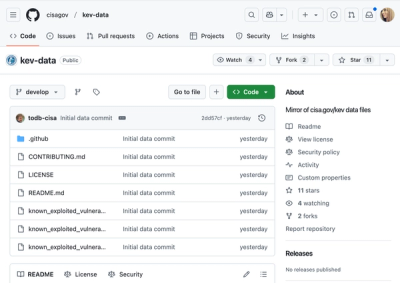
Security News
PyPI’s New Archival Feature Closes a Major Security Gap
PyPI now allows maintainers to archive projects, improving security and helping users make informed decisions about their dependencies.
media-devices-util
Advanced tools
This package exposes and API to work with mac/win media devices (cameras, microphones, screens)
What is this package for? To get info about available media devices and work with them. You can:
mac)mac)npm i -S media-devices-util
const mediaDevicesUtil = require("media-devices-util");
const videoDevices = mediaDevicesUtil.getVideoDevices();
const audioDevices = mediaDevicesUtil.getAudioDevices();
console.log({ audioDevices, videoDevices });
// output on mac:
// {
// audioDevices: [
// {
// id: 'AppleHDAEngineInput:1F,3,0,1,0:1',
// label: 'Built-in Microphone'
// }
// ],
// videoDevices: [
// {
// id: '0x1420000005ac8600',
// label: 'FaceTime HD Camera (Built-in)'
// },
// {
// id: '69733382',
// label: 'Capture screen 0'
// }
// ]
// }
//
// output on windows:
// {
// audioDevices: [
// {
// id: '0',
// label: 'Microphone (High Definition Audio Device)',
// alternativeName: '@device_cm_{33D9A762-90C8-11D0-BD43-00A0C911CE86}\\wave_{B073E9D3-C0A7-4CB0-84E0-F829B281F95F}'
// }
// ],
// videoDevices: [
// {
// id: '\\\\?\\usb#vid_203a&pid_fff9&mi_00#6&fafa70b&0&0000#{65e8773d-8f56-11d0-a3b9-00a0c9223196}\\global',
// label: 'FaceTime HD Camera (Built-in)'',
// alternativeName: '@device_pnp_\\\\?\\usb#vid_203a&pid_fff9&mi_00#6&fafa70b&0&0000#{65e8773d-8f56-11d0-a3b9-00a0c9223196}\\global'
// }
// ]
// }
const mediaDevicesUtil = require("media-devices-util");
mediaDevicesUtil.requestMediaAuthorization("camera").then((status) => {
if ("AUTHORIZED" === status) {
// permissions granted!
}
});
media-devices-util object has the following API:
type TDevice = {
// For mac:
// audio/video devices are using the 'uniqueID' property - https://developer.apple.com/documentation/avfoundation/avcapturedevice/1390477-uniqueid
// screen devices are using the 'CGDirectDisplayID' property - https://developer.apple.com/documentation/coregraphics/cgdirectdisplayid
// For win:
// audio devices are using the 'WaveInID' property - https://docs.microsoft.com/en-us/windows/win32/directshow/selecting-a-capture-device
// video devices are using the 'DevicePath' property - https://docs.microsoft.com/en-us/windows/win32/directshow/selecting-a-capture-device
id: string;
// For mac:
// audio/video devices are using the 'localizedName' property - https://developer.apple.com/documentation/avfoundation/avcapturedevice/1388222-localizedname
// screen devices are using the 'Capture screen ' prefix plus device id in 'CGGetActiveDisplayList' - https://developer.apple.com/documentation/coregraphics/1454603-cggetactivedisplaylist
// For win:
// using the 'FriendlyName' property - https://docs.microsoft.com/en-us/windows/win32/directshow/selecting-a-capture-device
label: string;
// For win:
// using the 'GetDisplayName' method's return value - https://docs.microsoft.com/en-us/windows/win32/api/objidl/nf-objidl-imoniker-getdisplayname
alternativeName?: string;
}
// AUTHORIZED - permissions granted
// DENIED - permissions denied
// NOT_DETERMINED - permissions not set
declare type TAuthorization = "AUTHORIZED" | "DENIED" | "NOT_DETERMINED";
declare type TMediaType = "camera" | "microphone";
type TMediaDevicesUtil = {
getDefaultVideoDevice(): TDevice;
getDefaultAudioDevice(): TDevice;
getVideoDevices(): TDevice[];
getAudioDevices(): TDevice[];
getScreenAuthorizationStatus(): TAuthorization;
getMediaAuthorizationStatus(mediaType: TMediaType): TAuthorization;
getMediaAuthorizationStatus(): {
camera: TAuthorization;
microphone: TAuthorization;
};
requestScreenAuthorization(): TAuthorization;
requestMediaAuthorization(mediaType: TMediaType): Promise<TAuthorization>;
}
Return type: TDevice
Retrieve the default video input device (camera).
For win, taking the first entry of the IEnumMoniker with the CLSID_VideoInputDeviceCategory parameter.
For mac, using the defaultDeviceWithMediaType:AVMediaTypeVideo method for audio/video devices.
Return type: TDevice
Retrieve the default audio input device (microphone).
For win, using the GetDefaultAudioEndpoint method.
For mac, using the defaultDeviceWithMediaType:AVMediaTypeAudio method.
Return type: TDevice[]
Retrieve the default video input devices list (cameras, screens, etc.).
For mac, using the devicesWithMediaType:AVMediaTypeVideo method, and the CGGetActiveDisplayList method for screens.
For win, using the IEnumMoniker with the CLSID_VideoInputDeviceCategory parameter.
Return type: TDevice[]
Retrieve the default audio input devices list (microphones, virtual devices, etc.).
For mac, using the devicesWithMediaType:AVMediaTypeAudio method.
For win, using the IEnumMoniker with the CLSID_AudioInputDeviceCategory parameter.
Return type: TAuthorization
Retrieve current permissions for screen recording.
For mac, using the CGPreflightScreenCaptureAccess method (>=11.0), or will try to match window processes ids (>=10.15), or will return AUTHORIZED.
For win, will always return AUTHORIZED.
Return type: TAuthorization | { camera: TAuthorization; microphone: TAuthorization; }
Arguments: (mediaType?: TMediaType)
Retrieve current permissions for audio and/or video usage. If no args passed - will return authorization status for both audio/video.
For mac, using the authorizationStatusForMediaType method.
For win, will always return AUTHORIZED for any type of media.
Return type: TAuthorization
Request for screen recording permissions. Will prompt user to modify screen recording permissions config, if possible, otherwise - will open the System Preferences window with Screen Recording tab opened.
For mac, using the CGRequestScreenCaptureAccess method (>=11.0), or will try to use CGDisplayStreamCreate method (>=10.15), or will return AUTHORIZED.
For win, will always return AUTHORIZED.
Return type: Promise<TAuthorization>
Arguments: (mediaType: TMediaType)
Request for microphone or camera recording permissions. Will prompt user to modify screen recording permissions config, if possible, otherwise - will open the System Preferences window with Camera or Microphone tab opened.
For mac, using the requestAccessForMediaType method (>=10.14), or will return AUTHORIZED.
For win, will always return AUTHORIZED for any type of media.
When using an ffmpeg or other libs to capture audio/video devices, you first need to obtain a list of available devices and their labels (IDs).
And when running ffmpeg to just get the devices list - it takes too long, because a lot of overhead ffmpeg lib actions are taken.
Using media-devices-util is much, much faster.
Let's imagine, that we want to capture the default audio and default video device with ffmpeg:
const spawn = require("child_process").spawn;
const mediaDevicesUtil = require("media-devices-util");
const defaultVideoDevice = mediaDevicesUtil.getDefaultVideoDevice();
const defaultAudioDevice = mediaDevicesUtil.getDefaultAudioDevice();
// for MacOS, you can use the 'label' prop, and the item's index (if used with getVideoDevices/getAudioDevices):
const ffmpegWinProcess = spawn("ffmpeg", ["-f", "avfoundation", "-i", `${defaultVideoDevice.label}:${defaultAudioDevice.label}`, "video.mkv"]);
// for Windows, you should use the 'label' or the 'alternativeName' prop:
const ffmpegMacProcess = spawn("ffmpeg", ["-f", "dshow", "-i", `video="${defaultVideoDevice.label}":audio="${defaultAudioDevice.alternativeName}"`, "video.mkv"]);
You can use the ffmpeg's list_devices option (for mac or win), and parse it's output to get the list itself.
Also, you can use other ffmpeg command abstractions (like ffmpeg and fluent-ffmpeg).
In any case, the list_devices in ffmpeg lib is something like a crunch, and the lib itself doesn't provide a programmatic way to enumerate devices.
Or use other ffmpeg nodejs bindings lib.
FAQs
This package exposes and API to work with mac/win media devices (cameras, microphones, screens)
The npm package media-devices-util receives a total of 11 weekly downloads. As such, media-devices-util popularity was classified as not popular.
We found that media-devices-util demonstrated a not healthy version release cadence and project activity because the last version was released a year ago. It has 1 open source maintainer collaborating on the project.
Did you know?

Socket for GitHub automatically highlights issues in each pull request and monitors the health of all your open source dependencies. Discover the contents of your packages and block harmful activity before you install or update your dependencies.

Security News
PyPI now allows maintainers to archive projects, improving security and helping users make informed decisions about their dependencies.

Research
Security News
Malicious npm package postcss-optimizer delivers BeaverTail malware, targeting developer systems; similarities to past campaigns suggest a North Korean connection.

Security News
CISA's KEV data is now on GitHub, offering easier access, API integration, commit history tracking, and automated updates for security teams and researchers.